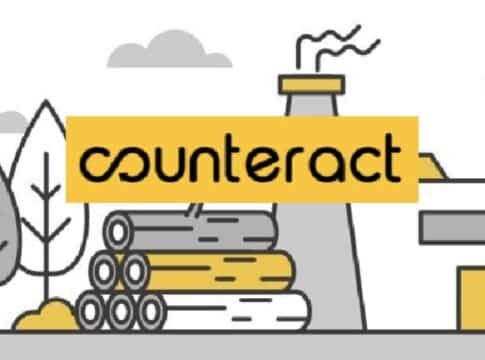VC Fund Counteract Raises $42 Million for Carbon Removal
The carbon removal industry now has its own dedicated VC fund called Counteract, which has raised ~$42 million.
There’s a need to develop novel carbon dioxide removal (CDR) technologies that are both effective and scalable. The Intergovernmental Panel on Climate Change (IPCC) is so clear about that.
The wave of funding into the sector comes as the IPCC report doubles down on the need to remove billions of tons of CO2 from the air. It stresses that emissions reductions alone aren’t enough.
The IPCC believes that CDR is necessary to achieve the Paris climate goals as shown in the charts below. CDR includes bioenergy combined with CCUS (BECCS), natural climate solutions (NCS), and direct air carbon capture with storage (DACCS).
Achieving the Paris Goal with Carbon Removal
The Rise of Carbon Removal Industry
The market for carbon removal is expanding rapidly. Private money came pouring in from big tech companies seeking to help early-stage CDR tech startups scale up and bring costs down.
Five world’s largest firms – Stripe, Alphabet, Meta, Shopify and McKinsey – launched an initiative called Frontier to invest around $1 billion in carbon removal by 2030. Their aim is to help CDR startups scale up and lower the cost of sucking in a ton of CO2 from the air.
Also, government incentives like carbon pricing as well as subsidies make CDR a good business. In fact, a lot of startups emerge in the sector, offering different ways to remove carbon.
The CDR sector also experienced a strong boost in 2022 alone. It received a whopping $13.8 billion investment globally as reported by Pitchbook. That figure almost broke a record despite the market downturn.
Counteract: A Special CDR Fund
London-based Counteract is a newly founded venture capital fund solely dedicated to carbon removal technologies.
In July last year, the UK government had invested £54 million into 15 projects that develop CDR technologies. The funding comes through the BEIS Net Zero Innovation Portfolio.
The U.S. Department of Energy (DOE) also announced the funding of $3.7 billion to help build a commercially viable CDR industry in the country.
Counteract is targeting a total of £35 million or ~$42 million for its inaugural fund. And it just reached a first close of £15 million or ~$18 million. This recent fundraising signals that investors are willing to bet on the emerging and rapidly rising industry of CDR.
There are currently 12 companies under Counteract’s portfolio. The VC fund only has one criterion when investing in companies: the capacity to remove 500 million tonnes of CO2 by 2050.
Right now, the world is removing only about 2 billion tonnes of CO2 from the atmosphere every year. Forests are doing much of the removal work. And climate experts say that the CDR capacity needs to increase by 1,300x by 2050.
VC funds on climate actions have been pouring in the last year. But only a few have a specific focus as Counteract. The fund’s managing partner, Andrew Shebbeare, said:
“It might sound like we have a very narrow investment focus because we only invest in carbon removal within climate investing; so we’re a specialist fund within a specialism. But at the same time, we’re also broad in that we invest in all carbon removal pathways.”
Counteract will invest in any form of carbon dioxide removal. E.g. nature-based solutions like forestry, regenerative agriculture, direct air capture (DAC), and biomass.
Alongside the growth of the carbon removal industry are some questions and uncertainties.
Questions surround the scalability of CDR tech and other things like the biomass supply chain. There are also concerns about market output scalability produced via carbon removal solutions.
For instance, the fund had invested in a company that produces nickel as a byproduct of its CO2 removal process. In this case, there are concerns about the scalability of the nickel market.
Counteract also invests in firms working on both credit models where they sell carbon credits equal to a tonne of CO2 removed from the air and business models such as the nickel startup.
Plans to Expand Outside Europe
Apart from removing CO2, Counteract is also looking for solutions with “co-benefits”. For example, technology that produces cement from recycled carbon is a good solution that permanently captures carbon while helping decarbonize the cement industry at the same time.
The current portfolio of Counteract will be transferred to the fund. This includes various carbon removal techniques from four different continents, including direct air capture, biomass, forestry, agriculture, mineralization, materials and more.
The fund plans to expand outside Europe and invest globally. Shebbeare acknowledges the fact that the global south offers a better opportunity for CDR.
Kenya’s Rift Valley, for instance, presents an ideal case for DAC due to its abundant geothermal energy. The DAC tech needs clean energy to operate.
As of this time, there’s a lot of interest showing up in the carbon removal sector. And despite those couple of questions the industry has to answer, Counteract expects to reveal more deals soon.
The post VC Fund Counteract Raises $42 Million for Carbon Removal appeared first on Carbon Credits.



